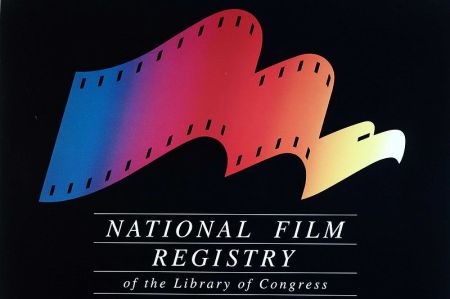 Hi, it's Tim, looking to rope y'all into a little bit of cinematic democracy in action. The National Film Preservation Board, you perhaps know, is the advisory council that suggests to the Librarian of Congress which American-produced films should be admitted to the National Film Registry. And surely you know what that is! The list of films deemed “culturally, historically, or aesthetically significant”, and worthy of being kept safe and preserved as a result (though unfortunately, being on the Registry doesn’t automatically mean a film is guaranteed preservation dollars, only the imprimatur of the Library of Congress saying, “Hey, people with film preservation dollars! Take a look at these, won’t you?”).
Hi, it's Tim, looking to rope y'all into a little bit of cinematic democracy in action. The National Film Preservation Board, you perhaps know, is the advisory council that suggests to the Librarian of Congress which American-produced films should be admitted to the National Film Registry. And surely you know what that is! The list of films deemed “culturally, historically, or aesthetically significant”, and worthy of being kept safe and preserved as a result (though unfortunately, being on the Registry doesn’t automatically mean a film is guaranteed preservation dollars, only the imprimatur of the Library of Congress saying, “Hey, people with film preservation dollars! Take a look at these, won’t you?”).
Now, the point of my bringing this up is that, while the Board advises the Librarian, it’s the public that advises the Board – any citizen is welcome to submit a list of nominees up to 50 films long that they believe to be worthy candidates for inclusion on the Registry. This nomination period, for this year’s inductees, closes on September 13, just over a week from now. And so I write this piece in the spirit of an exhortation: I don’t just want you to share a list of movies that you think should be inducted to the National Film Registry here in the comments section of this fine website, I want you to share that list with the National Film Board itself. For we are all well-educated cinephiles here, and I think our voices deserve to be heard. Information about nominating films can be found here, with links to a list of all films currently on the Registry, as well as some prominent films missing from it.
Here’s the list of movies that I’m going to submit after the jump from silents to absurdist cartoons to the Coen Bros...

Tim's 15

The Squaw Man (1914)
The first feature-length film shot in Hollywood, as well as the first film, of any length, directed by Hollywood’s leading master of glossy spectacle, Cecil B. DeMille. Simply put, it’s one of the most important artifacts of the American film industry.
Hypocrites (1915)
One of the handful of surviving films directed by Lois Weber, perhaps the most important early female director, and one of the most important directors of any gender in the 1910s. The copy in possession of the Library of Congress is in perilous condition, and such a landmark film cannot afford to be lost.
Straight Shooting (1917)
The oldest film directed by John Ford known to still exist, as well as his first feature. As one of the most highly-regarded of all American directors, his career milestones are of particular interest to the historian.
 What Price Hollywood? (1932)
What Price Hollywood? (1932)
The oldest version of the hugely familiar A Star Is Born narrative template, and also the best: the nearly-forgotten Constance Bennett and the totally-forgotten Lowell Sherman both tear the screen apart as they assault the melodrama like you could only do in the Pre-Code era. Desperately worthy of a bigger audience
This Is the Army (1943)
The first and most popular of a weird little subgenre from World War II: revue films about people famous and not putting on a show to entertain the troops with a variety of songs and short scenes. Films which, themselves, were then sent around the world, to entertain the troops. A curious historical footnote that doesn’t deserve to be forgotten.

Screwball Squirrel (1944)
Tex Avery’s most legendarily aggressive comic cartoon is perhaps the most sustained dose of Surrealism ever perpetrated by a major American studio, and it took half a century before the rest of animation started to catch up to the deliberate, clever rule-flaunting of this absurdist masterpiece.
Seal Island (1948)
The first of Walt Disney’s True-Life Adventures, this short nature documentary more or less invented the form as we know it today: animals in their (slightly manipulated) environment, a stentorian narrator informing us what we’re looking at. Groundbreaking or not, Disney hasn’t done much right by these films in recent memory, and they deserve a higher profile.
Park Row (1952)
Sam Fuller, great iconoclast and hero to lovers of scraggly little B-pictures, only has one film on the Registry, and that’s just not right. This tribute to the history American news media, made for the money Fuller had in his pocket at the time, and never available in any decent home video format, is easily the most deserving candidate, much in need of readier access.

The Beast from 20,000 Fathoms (1953)
With Ray Harryhausen having passed away recently, it’s the ideal moment to nod in the direction of his first major solo work, the film that paved the way for decades upon decades of movies in which a Giant Something terrorizes a city. Truly a groundbreaking and majorly influential B-picture.
Zorn’s Lemma (1970)
A watershed experimental film, reaching one of the widest audiences any non-representational feature ever has ever enjoyed. And like most experimental films of its generation, digital representations simply don’t capture the whole texture of the thing.
Sweet Sweetback’s Baadasssss Song (1971)
The first great work of the blaxploitation era, a stylistically audacious work of identity politics that represents one of the first times that a minority filmmaker was able to create a financial smash hit totally outside of the strictures of the white-dominated film industry.
The Adventures of André and Wally B. (1984)
Not the first CGI animation of note; but it was, more or less, the first CGI cartoon, with the roundness and squishiness we associate with that word. As such, it’s arguably the first time that CGI proved that it could express personality and acting, and not simply render lifeless objects with plasticky sheen.
 Todd Haynes debut!
Todd Haynes debut!
Superstar: The Karen Carpenter Story (1988)
A seismic early work in the New Queer Cinema and a major work of cultural commentary, the awkward rights situation involving the soundtrack (and the life story of the titular subject) have kept the film in bootleg form for a generation. Inclusion on the Registry would be a first step to legitimizing this kind of co-optive storytelling.
The War Room (1993)
The best film ever made about the American electoral process. Period. A rare example of a journalistic documentary that continues to be important and telling even two decades after the moment of its creation.
O Brother, Where Art Thou? (2000)
The first film to undergo digital color-correction, a technique which is now used so extensively and casually that it’s hard to think of anything that isn’t covered with a sheen of colors tweaked just-so. Maybe not something to praise, but it set a new standard for how commercial cinematography was going to look in the 21st Century.
So how about it? Who else is going to submit their nominations? Help shape the future of U.S. film culture!